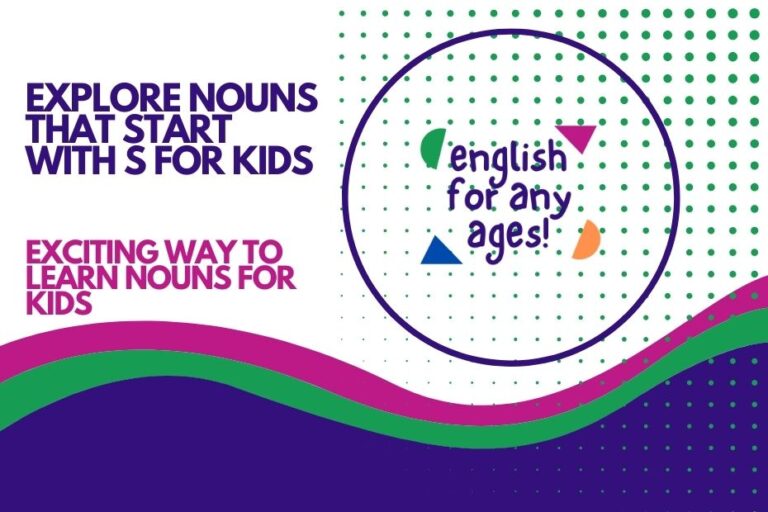Mastering “Tasked”: A Comprehensive Guide to Usage
Understanding how to use the word “tasked” correctly is crucial for clear and effective communication, especially in professional and academic settings. This guide provides a comprehensive overview of “tasked,” covering its definition, grammatical structure, usage rules, and common mistakes.
Whether you are an English language learner or a native speaker looking to refine your writing skills, this article will equip you with the knowledge and practice needed to use “tasked” with confidence.
This article is designed for anyone who wants to improve their understanding and use of the word “tasked” in English. It will be particularly beneficial for students, professionals, and writers who need to communicate clearly and accurately in various contexts.
By the end of this guide, you will be able to confidently incorporate “tasked” into your vocabulary and writing.
Table of Contents
- Definition of “Tasked”
- Structural Breakdown
- Types of “Tasked” Usage
- Examples of “Tasked” in Sentences
- Usage Rules for “Tasked”
- Common Mistakes with “Tasked”
- Practice Exercises
- Advanced Topics
- Frequently Asked Questions
- Conclusion
Definition of “Tasked”
“Tasked” is the past participle and past tense form of the verb “to task.” To understand “tasked,” we must first define “task.” A task is a piece of work that needs to be done, especially one that is assigned to someone. Therefore, “tasked” means to have assigned a task to someone or something. It implies a delegation of responsibility or a specific duty.
Classification: “Tasked” is a verb, specifically the past tense and past participle form. It can function as part of a verb phrase or as an adjective modifying a noun.
Function: “Tasked” indicates that someone or something has been given a specific job or responsibility. It often implies a formal assignment or a defined role.
Contexts: “Tasked” is commonly used in professional environments, project management, military contexts, and any situation where responsibilities are formally assigned. It can also appear in more general contexts, although less frequently.
Structural Breakdown
The structure of sentences using “tasked” typically involves the following elements:
- Subject: The person or entity doing the tasking (assigning the task).
- Verb: “Tasked” (past tense or past participle of “to task”).
- Object (optional): The person or entity being tasked.
- Prepositional Phrase (often with “with”): Specifies the task or responsibility assigned.
The most common structure is: Subject + was/were tasked + with + task/responsibility.
Another possible structure is: Subject + tasked + Object + with + task/responsibility.
Here’s a breakdown with examples:
- Passive Voice Construction: The team was tasked with completing the project by Friday.
- Active Voice Construction: The manager tasked John with writing the report.
Types of “Tasked” Usage
“Tasked” can be used in different ways depending on the context and the intended meaning. Here are the main types of usage:
Passive Voice
The passive voice is the most common way to use “tasked.” It emphasizes the person or entity receiving the task rather than the person assigning it. The structure is typically “Subject + was/were tasked + with + task.”
Example: The engineers were tasked with designing a new bridge.
Active Voice
In the active voice, the subject performs the action of tasking. This form is less common but can be used for emphasis.
The structure is typically “Subject + tasked + Object + with + task.”
Example: The CEO tasked the marketing team with launching the new campaign.
Adjectival Usage
“Tasked” can also function as an adjective, describing someone or something that has been assigned a specific task or role. This usage is less frequent but grammatically correct.
Example: The tasked employee was responsible for data entry.
Examples of “Tasked” in Sentences
To illustrate the different ways “tasked” can be used, here are several examples categorized by usage type. These examples will help you understand the context and nuances of using “tasked” correctly.
Passive Voice Examples
The following table showcases the use of “tasked” in the passive voice, which is the most common form. Notice how the subject is receiving the action of the verb.
| Sentence |
|---|
| The research team was tasked with analyzing the data. |
| She was tasked with organizing the conference. |
| The software developers were tasked with fixing the bugs. |
| The project manager was tasked with overseeing the entire operation. |
| The students were tasked with writing an essay on climate change. |
| The committee was tasked with reviewing the proposals. |
| The security guards were tasked with patrolling the building. |
| The volunteers were tasked with distributing food to the homeless. |
| The doctors were tasked with treating the patients. |
| The firefighters were tasked with extinguishing the fire. |
| The police officers were tasked with investigating the crime. |
| The soldiers were tasked with defending the country. |
| The interns were tasked with assisting the senior staff. |
| The new recruits were tasked with learning the company policies. |
| The analysts were tasked with predicting market trends. |
| The consultants were tasked with providing strategic advice. |
| The auditors were tasked with verifying the financial records. |
| The journalists were tasked with reporting on the event. |
| The diplomats were tasked with negotiating the treaty. |
| The engineers were tasked with designing the infrastructure. |
| The scientists were tasked with conducting the experiment. |
| The artists were tasked with creating the mural. |
| The musicians were tasked with performing at the concert. |
| The actors were tasked with rehearsing the play. |
Active Voice Examples
This table demonstrates the active voice usage of “tasked.” In these sentences, the subject is performing the action of assigning the task.
| Sentence |
|---|
| The supervisor tasked the employee with completing the report. |
| The general tasked the troops with securing the area. |
| The CEO tasked the marketing team with launching the campaign. |
| The president tasked the advisor with drafting the speech. |
| The director tasked the actors with rehearsing the scene. |
| The manager tasked the intern with organizing the files. |
| The teacher tasked the students with reading the chapter. |
| The coach tasked the players with practicing the drill. |
| The foreman tasked the workers with building the wall. |
| The commander tasked the soldiers with patrolling the border. |
| The editor tasked the writer with revising the article. |
| The chef tasked the sous chef with preparing the sauce. |
| The conductor tasked the orchestra with playing the symphony. |
| The librarian tasked the assistant with shelving the books. |
| The programmer tasked the developer with debugging the code. |
| The architect tasked the contractor with building the house. |
| The doctor tasked the nurse with administering the medication. |
| The accountant tasked the clerk with balancing the books. |
| The scientist tasked the researcher with analyzing the data. |
| The judge tasked the jury with reaching a verdict. |
| The HR department tasked the recruiter with finding new talent. |
| The lead engineer tasked the junior engineer with running simulations. |
| The head designer tasked the design team with creating a new product line. |
Adjectival Usage Examples
This table shows how “tasked” can be used as an adjective, describing a person or thing that has been assigned a task.
| Sentence |
|---|
| The tasked employee was responsible for data entry. |
| The tasked officer led the reconnaissance mission. |
| The tasked vehicle was equipped with surveillance equipment. |
| The tasked agent successfully completed the assignment. |
| The tasked representative attended the conference. |
| The tasked individual presented the findings. |
| The tasked team delivered the project on time. |
| The tasked student completed the extra credit assignment. |
| The tasked volunteer helped organize the event. |
| The tasked reviewer gave valuable feedback. |
| The tasked monitor ensured compliance. |
| The tasked observer provided a detailed report. |
| The tasked programmer fixed the critical bug. |
Examples with different prepositions
This table shows how “tasked” can be used with different prepositions, such as “with”, “to”, “for” and “by”.
| Sentence |
|---|
| The research team was tasked with analyzing the data. |
| The manager was tasked to oversee the new project. |
| The department was tasked for improving customer satisfaction. |
| The city was tasked by the government to reduce pollution. |
| The team was tasked with developing a new marketing strategy. |
| She was tasked to present the findings at the conference. |
| He was tasked for ensuring the project’s success. |
| The organization was tasked by the community to provide support. |
| The students were tasked with writing a research paper. |
| The committee was tasked to evaluate the proposals. |
| The volunteers were tasked for organizing the charity event. |
| The employees were tasked by the company to increase productivity. |
| The soldiers were tasked with defending the border. |
| The engineers were tasked to design the new infrastructure. |
| The scientists were tasked for conducting experiments. |
| The artists were tasked by the museum to create a new exhibit. |
| The nurses were tasked with caring for the patients. |
| The teachers were tasked to educate the students. |
| The firefighters were tasked for responding to emergencies. |
| The police officers were tasked by the city to maintain order. |
| The IT department was tasked with maintaining the network. |
| The HR department was tasked to handle employee relations. |
Usage Rules for “Tasked”
Using “tasked” correctly involves understanding its grammatical function and the context in which it is appropriate. Here are some key usage rules:
- Use the correct tense: “Tasked” is the past tense and past participle of “to task.” Ensure you are using it in a context that requires a past action or a passive construction.
- Choose the appropriate voice: Decide whether to use the active or passive voice based on the emphasis you want to convey. The passive voice is generally more common with “tasked.”
- Use the correct preposition: The most common preposition used with “tasked” is “with,” indicating the task or responsibility assigned. However, using other prepositions like “to”, “for” and “by” is also possible.
- Ensure subject-verb agreement: If you are using “tasked” in a verb phrase, make sure the auxiliary verb (e.g., “was,” “were”) agrees with the subject in number.
- Maintain clarity: Make sure the sentence clearly indicates who is being tasked and what they are being tasked with.
Exceptions and Special Cases:
- While “tasked” is often used in formal contexts, it can also appear in informal settings, although less frequently.
- In some cases, the “with” prepositional phrase can be implied if the task is clear from the context, but it’s generally better to include it for clarity.
Common Mistakes with “Tasked”
Even experienced English speakers can make mistakes when using “tasked.” Here are some common errors and how to avoid them:
| Incorrect | Correct | Explanation |
|---|---|---|
| The team is tasking with the project. | The team was tasked with the project. | Incorrect tense and missing auxiliary verb. “Tasked” is past tense, and the passive voice requires “was/were.” |
| The manager task the employee. | The manager tasked the employee. | Missing “ed” ending for past tense. The correct form is “tasked.” |
| He tasked to do the job. | He was tasked to do the job. | Missing auxiliary verb. Requires the passive voice construction “was tasked.” |
| They are tasking with the report. | They are tasked with the report. | Incorrect tense. The correct form is “They are tasked with the report” (present tense and passive voice). |
| The tasking employee. | The tasked employee. | Incorrect form. “Tasked” is the correct past participle form to use as an adjective. |
| She was task on the project. | She was tasked with the project. | Incorrect preposition. The correct preposition is “with.” |
| I am task to finish the report. | I was tasked to finish the report. | Incorrect tense. The correct form is “I was tasked…” (past tense and passive voice). |
Practice Exercises
Test your understanding of “tasked” with these practice exercises. Fill in the blanks with the correct form of “tasked” or rewrite the sentences using “tasked” correctly.
Exercise 1: Fill in the Blanks
| Question | Answer |
|---|---|
| The students _____ with completing the assignment by Friday. | were tasked |
| The manager _____ John with leading the project. | tasked |
| She _____ with organizing the conference. | was tasked |
| The engineers _____ with designing the new bridge. | were tasked |
| The CEO _____ the team with increasing sales. | tasked |
| The committee _____ with reviewing the proposals. | was tasked |
| The soldiers _____ with defending the border. | were tasked |
| The intern _____ with assisting the senior staff. | was tasked |
| The analysts _____ with predicting market trends. | were tasked |
| The auditors _____ with verifying the financial records. | were tasked |
Exercise 2: Rewrite the Sentences
| Question | Answer |
|---|---|
| The team received the assignment to analyze the data. | The team was tasked with analyzing the data. |
| The supervisor gave the employee the job of writing the report. | The supervisor tasked the employee with writing the report. |
| The general assigned the troops to secure the area. | The general tasked the troops with securing the area. |
| The president delegated the responsibility of drafting the speech to the advisor. | The president tasked the advisor with drafting the speech. |
| The director assigned the actors to rehearse the scene. | The director tasked the actors with rehearsing the scene. |
| The manager gave the intern the job of organizing the files. | The manager tasked the intern with organizing the files. |
| The teacher assigned the students to read the chapter. | The teacher tasked the students with reading the chapter. |
| The coach assigned the players to practice the drill. | The coach tasked the players with practicing the drill. |
| The foreman assigned the workers to build the wall. | The foreman tasked the workers with building the wall. |
| The commander assigned the soldiers to patrol the border. | The commander tasked the soldiers with patrolling the border. |
Exercise 3: Error Correction
| Question | Answer |
|---|---|
| She is task with the project. | She was tasked with the project. |
| The manager task the employee to do the work. | The manager tasked the employee with doing the work. |
| They task with cleaning the room. | They were tasked with cleaning the room. |
| He task for writing the report. | He was tasked with writing the report. |
| I am task with finishing the task. | I was tasked with finishing the task. |
| The employee task to do the job. | The employee was tasked to do the job. |
| The team task to improve the process. | The team was tasked to improve the process. |
| The consultant task with providing advice. | The consultant was tasked with providing advice. |
| The researcher task to analyze the data. | The researcher was tasked to analyze the data. |
| The analyst task with predicting the trends. | The analyst was tasked with predicting the trends. |
Advanced Topics
For advanced learners, understanding the nuances of “tasked” in complex sentence structures and idiomatic expressions can further enhance their language proficiency.
- Complex Sentence Structures: Using “tasked” in sentences with multiple clauses or embedded phrases.
- Idiomatic Expressions: Exploring less common but grammatically correct uses of “tasked” in specific contexts.
- Formal vs. Informal Usage: Recognizing when “tasked” is most appropriate and when alternative verbs might be more suitable.
For instance, consider this complex sentence: “Having been tasked with the responsibility of overseeing the entire project, and understanding the importance of its timely completion, she meticulously planned each phase.” This demonstrates the use of “tasked” in a participial phrase at the beginning of a complex sentence.
Frequently Asked Questions
Here are some frequently asked questions about using “tasked” in sentences:
- Is it always necessary to use “with” after “tasked”?
While “with” is the most common preposition, it’s not always strictly necessary if the task is clear from the context. However, using “with” generally improves clarity.
- Can “tasked” be used in the present tense?
No, “tasked” is the past tense and past participle. To use it in the present tense, you would use “task” (e.g., “The manager tasks the employee with writing the report”).
- What is the difference between “tasked with” and “assigned to”?
Both phrases indicate responsibility, but “tasked with” often implies a more formal or specific assignment. “Assigned to” can be more general.
- Is it correct to say “tasked by”?
“Tasked by” is less common but can be used to indicate who assigned the task (e.g., “The project was tasked by the CEO”). “Tasked with” is used to indicate the task itself.
- Can “tasked” be used as a noun?
No, “tasked” is a verb (past tense and past participle) and can sometimes function as an adjective. The noun form is “task.”
- How do I avoid using “tasked” incorrectly?
Pay attention to the tense, voice, and preposition. Review the examples and practice exercises in this guide to reinforce your understanding.
- What are some alternatives to “tasked”?
Alternatives include “assigned,” “delegated,” “charged with,” and “given the responsibility of.” The best choice depends on the specific context.
- Is “tasked” formal or informal?
While “tasked” can be used in both formal and informal contexts, it’s generally perceived as more formal. In very informal situations, simpler verbs like “asked” or “told” might be more appropriate.
Conclusion
Mastering the use of “tasked” can significantly improve the clarity and precision of your communication. By understanding its definition, grammatical structure, and usage rules, you can confidently incorporate it into your writing and speaking.
Remember to practice using “tasked” in various contexts and review the common mistakes to avoid errors. With consistent effort, you’ll be able to use “tasked” effectively and accurately.
This guide has provided a comprehensive overview of “tasked,” covering everything from its basic definition to advanced usage. By utilizing the examples, exercises, and tips provided, you can confidently use “tasked” in your everyday communication.
Keep practicing and refining your skills to become a proficient English speaker and writer.






